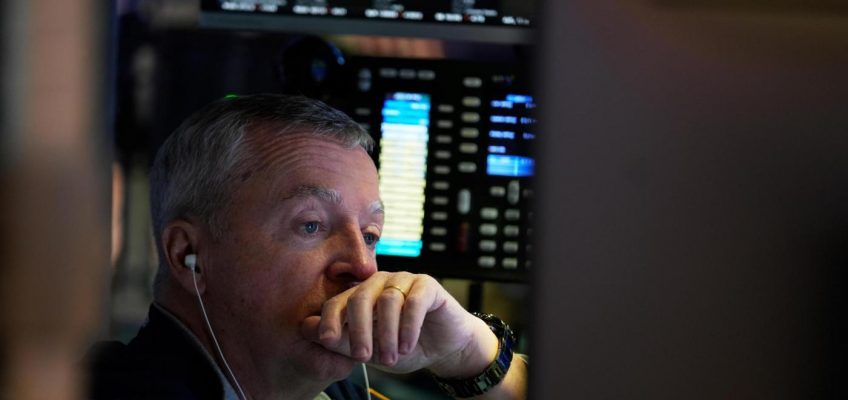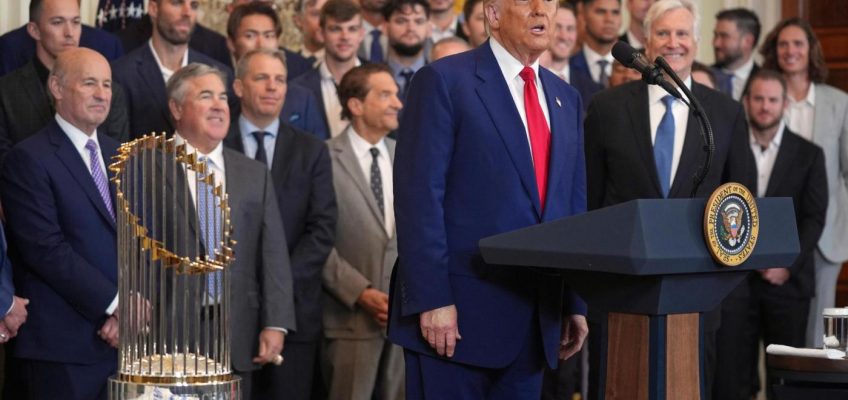By STAN CHOE and ALEX VEIGA, Associated Press
NEW YORK (AP) — Wall Street could soon be in the claws of another bear market as the Trump administration’s tariff blitz fuels fears that the added taxes on imported goods from around the world will sink the global economy.
The last bear market happened in 2022, but this decline feels more like the sudden, turbulent bear market of 2020, when the benchmark S&P 500 index tumbled 34% in a one-month period, the shortest bear market ever.
Here are some common questions about bear markets:
Why is it called a bear market?
A bear market is a term used by Wall Street when an index such as the S&P 500 or the Dow Jones Industrial Average has fallen 20% or more from a recent high for a sustained period of time.
Related Articles
The busiest days to fly around Memorial Day in 2025
Home cooks are shopping a little differently for groceries in 2025
Trump’s tax plans: Here’s what to expect for your taxes in 2025 and beyond
Wedding guest travel: Minimizing costs to make it work
Think twice before bailing out of the stock market, financial advisers say
Why use a bear to refer to a market slump? Bears hibernate, so they represent a stock market that’s retreating. In contrast, Wall Street’s nickname for a surging market is a bull market, because bulls charge.
The S&P 500, Wall Street’s main barometer of health, was down 1.2% in Monday afternoon trading. It’s now 18.4% below the all-time high it set on Feb. 19.
The Dow industrials fell 1.8%, and the tech-heavy Nasdaq composite, which already was in a bear market, dropped 0.9%.
The most recent bear market for the S&P 500 ran from Jan. 3 to Oct. 12 in 2022.
What’s bothering investors?
The trade war has ratcheted up fear and uncertainty on Wall Street over how businesses and consumers will respond.
President Donald Trump followed through on tariff threats last week by declaring a 10% baseline tax on imports from all countries and higher tariff rates on dozens of nations that run trade surpluses with the United States.
Global markets cratered the next day, and the sell-off deepened after China announced it would retaliate with tariffs equal to the ones from the U.S.
A container ship sails off from a container terminal in Qingdao in eastern China’s Shandong province Sunday, April 6, 2025. (Chinatopix Via AP)
Tariffs cause economic pain in part because they’re a tax paid by importers that often gets passed along to consumers, adding to inflationary pressure. They also provoke trading partners into retaliating, which can hurt all economies involved.
Import taxes can also cause economic damage by complicating the decisions businesses have to make, including which suppliers to use, where to locate factories and what prices to charge. And that uncertainty can cause them to delay or cancel investments that help drive economic growth.
The tariffs come at a time when the U.S. economy is already showing signs of slowing. Markets are also worried that tariffs could fuel inflation, which recently ticked higher.
How long do bear markets last and how deep do they go?
On average, bear markets have taken 13 months to go from peak to trough and 27 months to get back to breakeven since World War II. The S&P 500 index has fallen an average of 33% during bear markets in that time. The biggest decline since 1945 occurred in the 2007-2009 bear market, when the S&P 500 fell 57%.
A general view shows the New York Stock Exchange, Monday, April 7, 2025, in New York. (AP Photo/Yuki Iwamura)
History shows that the faster an index enters into a bear market, the shallower they tend to be. Historically, stocks have taken 251 days (8.3 months) to fall into a bear market. When the S&P 500 has fallen 20% at a faster clip, the index has averaged a loss of 28%.
The longest bear market lasted 61 months and ended in March 1942. It cut the index by 60%.
When is a bear market over?
Generally, investors look for a 20% gain from a low point as well as sustained gains over at least a six-month period. It took less than three weeks for stocks to rise 20% from their low in March 2020.
Should investors sell now?
If you need the money now or want to lock in the losses, yes. Otherwise, many advisers suggest riding through the ups and downs while remembering the swings are the price of admission for the stronger returns that stocks have provided over the long term.
While dumping stocks would stop the bleeding, it would also prevent any potential gains. Many of the best days for Wall Street have occurred either during a bear market or just after one ended. That includes two separate days in the middle of the 2007-2009 bear market when the S&P 500 surged roughly 11%, as well as leaps of better than 9% during and shortly after the monthlong 2020 bear market.
Advisers suggest putting money into stocks only if it will not be needed for several years. The S&P 500 has come back from every one of its prior bear markets to eventually rise to another all-time high.
The down decade for the stock market following the 2000 bursting of the dot-com bubble was a notoriously brutal stretch, but stocks have often been able to regain their highs within a few years.
Veiga reported from Los Angeles.




